I’ve learned a lot about planting hydrangeas since my first attempts many years ago. If this is your first time trying, here’s how to plant a panicle hydrangea successfully.
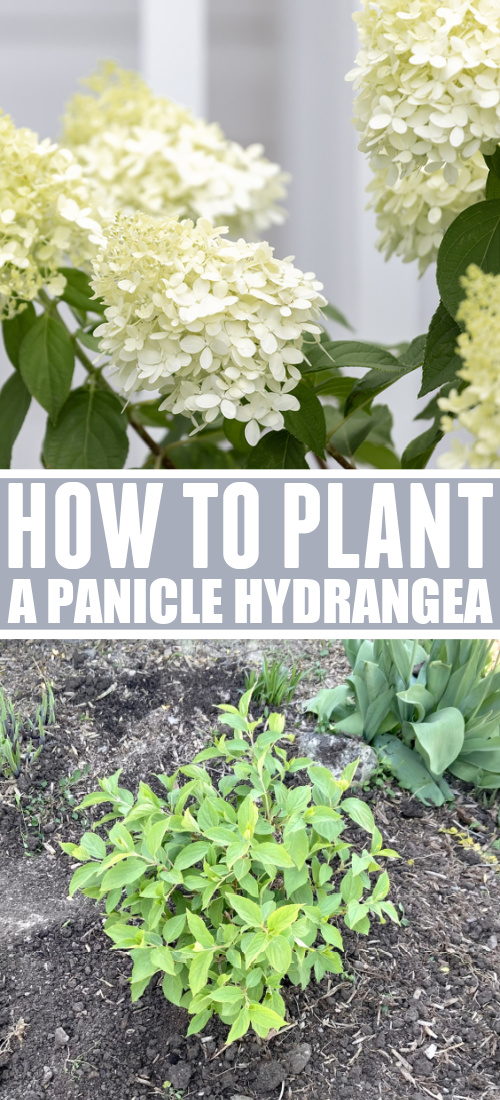
Everyone loves a beautiful, big, healthy hydrangea bush, blooming profusely at the peak of summer. Depending on where you live, you might see them growing in gardens all over your town. Just because they’re so common, doesn’t necessarily mean that they’re super easy to grow successfully, as I’ve mentioned before. When I first started growing hydrangeas, I thought they’d be one of those super easy, maintenance free plants, kind of like lilacs or peonies, but that’s definitely not always the case. I made a few big mistakes the first few times I tried to plant hydrangeas in my gardens before I figured it out and grew the beautiful hydrangeas that I’m always showing off in the summertime. Today I thought I’d walk you through how to plant panicle hydrangeas as I add another one to our front garden, so you can be a little more informed than I was at first.
What is a Panicle Hydrangea?
A panicle hydrangea is a family of hydrangea species with a particular leaf type and flower head shape. They also happen to be a really hardy variety of hydrangea, are very sun-tolerant, and are also often really easy to grow. You’ll know a panicle hydrangea by the cone-shaped flower heads, as opposed to the more sphere-shaped flower heads of other varieties. They also tend to have smaller, pointier leaves. Some varieties remain quite compact even at maturity, but some grow to be quite large, like the one that I planted next to our porch a few years ago. I have a lot of garden space to fill around our property, so I’m always on the lookout for the largest varieties that I can find. The one I’m planting here is called “Phantom” and should grow to be about 7’x7′.
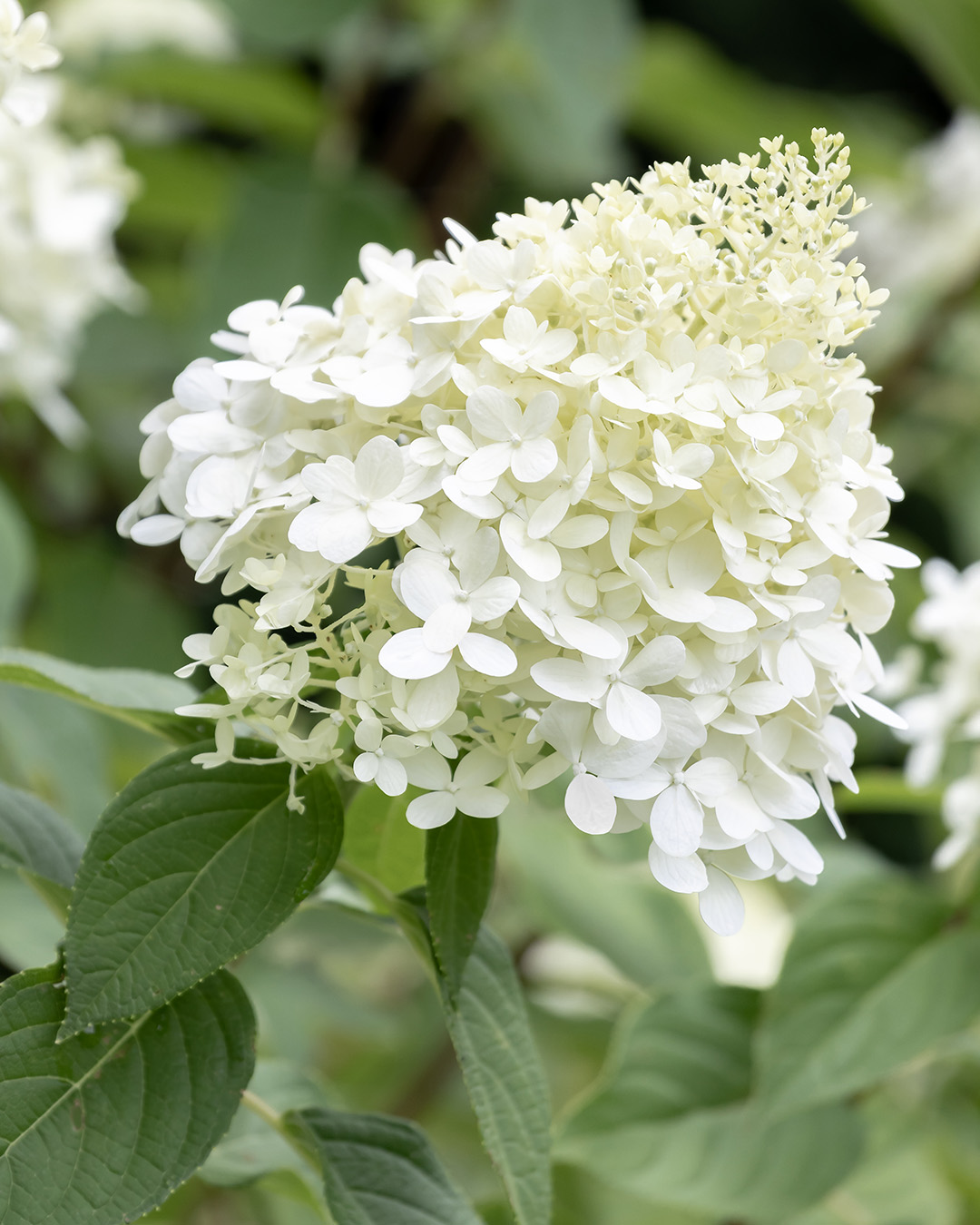
Supplies Needed to Plant Your Panicle Hydrangea
- A large, sharp shovel
- Compost or rich garden soil
- A soil scoop
- A trowel
- A watering can or a garden hose
- Mulch
- Garden shears or sharp scissors
I find it really helpful to gather all my tools that I’ll need for a gardening job like this all together where I’ll be working. Kind of like the “mis-en-place” practice that you might use when cooking to have all your ingredients together. When you have to trek back and forth across your yard to grab every little thing as you realize you need it, somehow it ends up making a simple job feel like a big chore and you might be less inclined to get out and plant as often as you might like to. You might also end up cutting corners and not doing as good of a job because it doesn’t seem worth it to walk aaaall the way over to the garage to grab what you need and then aaaall the way back. I might be speaking from experience here. 🙂 So just get everything, do the job, be thoroughly pleased with yourself, then put everything away, and you’ll be happy to do it again the next time.
How to Plant a Panicle Hydrangea in the Ground
When I first started planting larger plants and shrubs in our gardens here, I made a few big mistakes. I’d planted lots of little annuals in planters, and even quite a few perennials in our little garden beds in our townhouse backyard in the city, but planting a large shrub in the ground, or in a garden bed that’s been in place for decades is really something else entirely. It’s not quite as simple as just digging a hole the size of your root ball and plunking your plant into place.
The first thing you need to do is dig a hole at least twice as big as the container that your hydrangea came in. When I’ve dug my holes too small in the past, my hydrangeas just didn’t end up thriving. You’ll be digging down quite deep and your hydrangeas roots will end up reaching even deeper. With a lot of garden beds, you’ll find that the depth of the topsoil doesn’t go down very far and under that is usually just filled in with clay and filler dirt, which isn’t ideal for hydrangeas. When you dig a larger hole, you can fill in with good compost and rich garden soil to give your hydrangea plenty of good, soft soil to grow in. Just buy a few bags of it at the garden centre if you don’t have your own compost and you’ll be all set for quite a bit of planting.
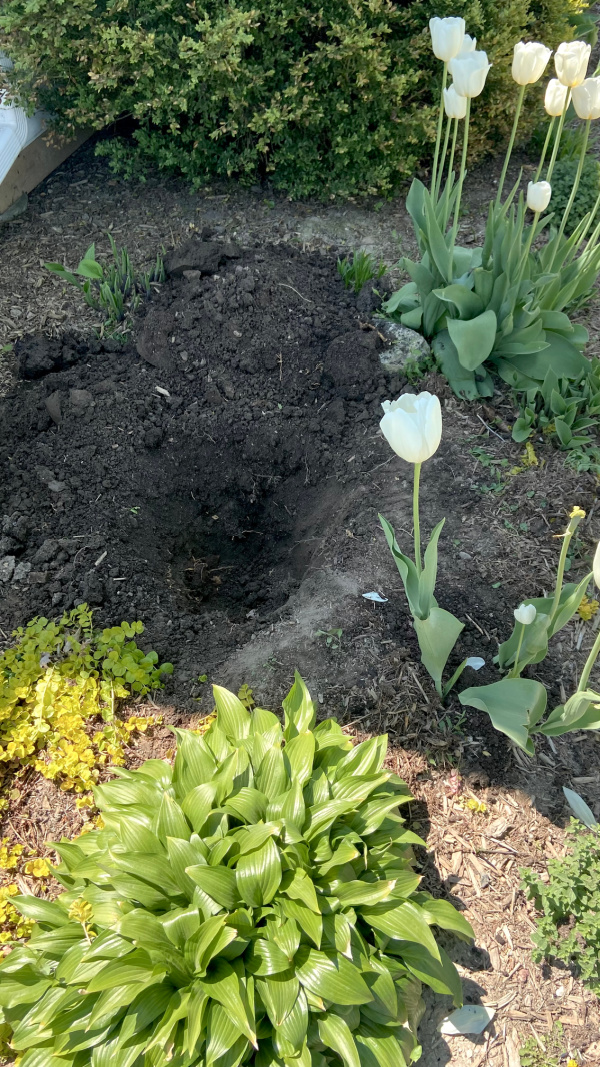
Once you have your hole, scoop a few inches of your compost or good garden soil down into the hole, just enough so that when your hydrangea sits on top, the base will be level with the ground. Remove your hydrangea from its garden centre pot and place it in the hole.
Fill in the hole around the hydrangea with rich garden soil. Feel free to top it off with a little bit of the dirt from the hole you dug as well. As long as you have quite a bit of fresh, nutrient-rich soil in there right next to the hydrangea, it’ll do well. Some old dirt mixed in there is fine.
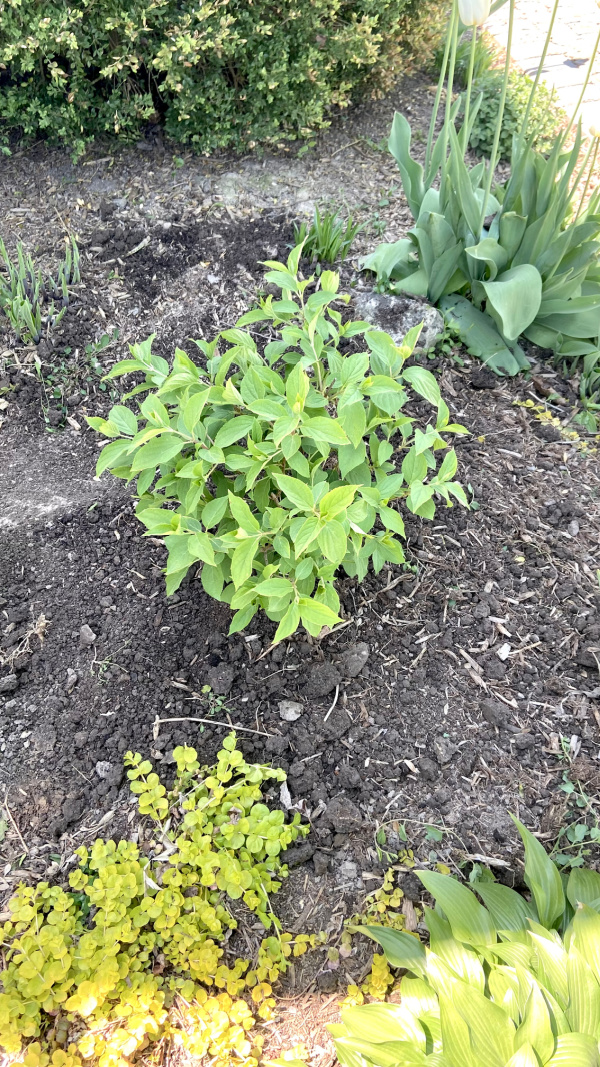
Once the hole has been filled all around, pat the earth down around the base of the hydrangea to secure it in place, then top off the area you dug up with a little fresh mulch to help hold in the moisture.
Water your hydrangea deeply and continue watering it well daily for the first three months or so to help it get really well-established. You may find this other blog post handy a little later in the season for this common panicle hydrangea issue: What to do When Your Hydrangea Leaves Turn Yellow.
When to Plant Hydrangeas
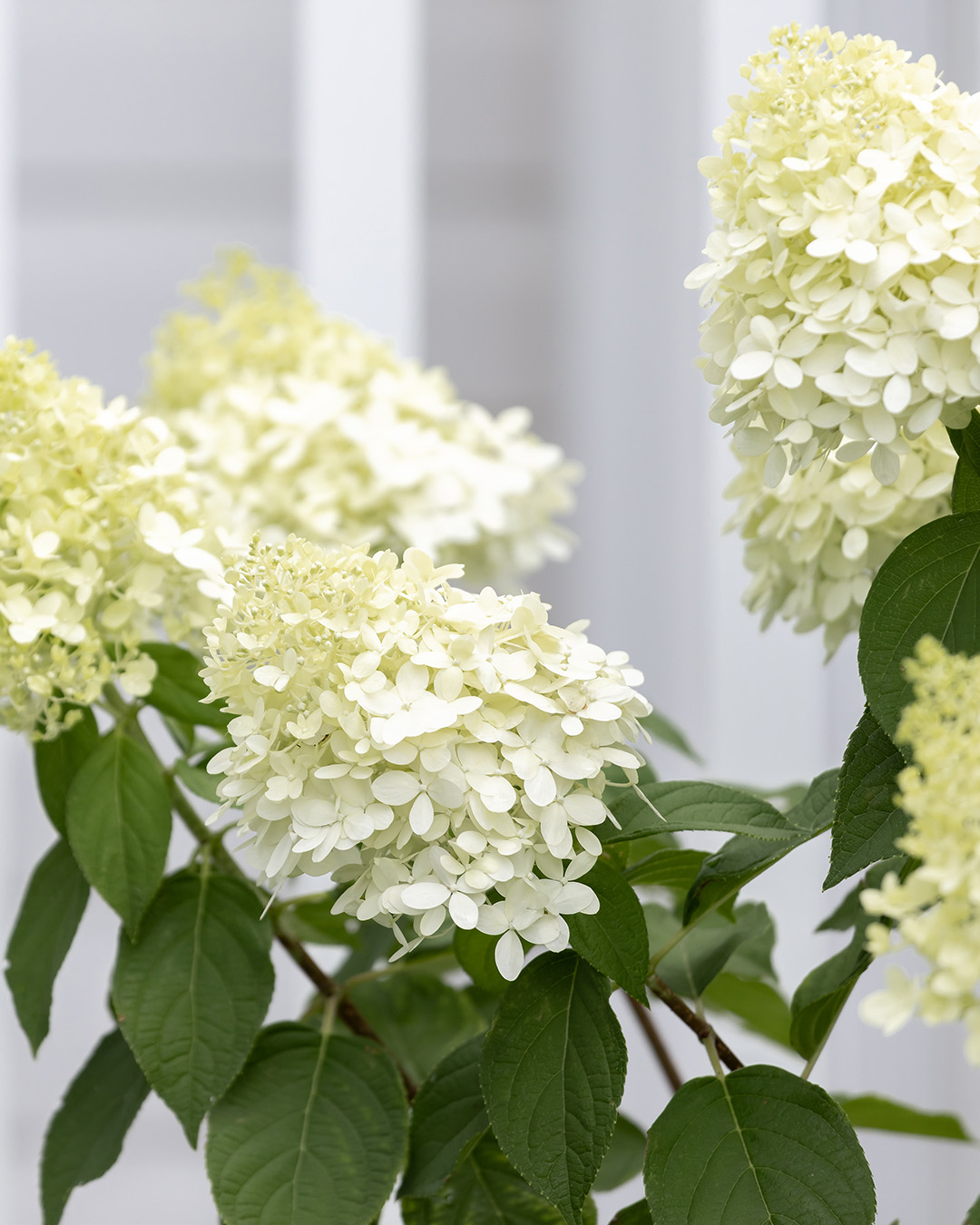
You can plant these hydrangeas really any time that the ground is workable, but it’s most gentle on the plant if you plant it when the danger of frost has passed, which begins about mid-May around here. Don’t be afraid to plant your hydrangea during the peak of summer heat though. If it’s August and you find yourself wanting to add a hydrangea to your garden, just keep up with your daily deep-watering to help it get established and it will do just fine.
MORE IDEAS LIKE THIS
- How to Grow Healthy Boxwoods
- How to Properly Edge a Flower Bed
- Seven Hosta Mistake That Everyone Keeps Making
- Emergency First Aid for Hydrangea Problems
- How to Fix Leggy Petunias
- My Favorite Trick for Filling Garden Beds Quickly and Inexpensively
- How to Easily Get Ants Off Cut Peonies
- The Creek Line House Gardening Archives
Courtenay Hartford is the author of creeklinehouse.com, a blog based on her adventures renovating a 120-year-old farmhouse in rural Ontario, Canada. On her blog, Courtenay shares interior design tips based on her own farmhouse and her work as founder and stylist of the interior photography firm Art & Spaces. She also writes about her farmhouse garden, plant-based recipes, family travel, and homekeeping best practices. Courtenay is the author of the book The Cleaning Ninja and has been featured in numerous magazines including Country Sampler Farmhouse Style, Better Homes and Gardens, Parents Magazine, Real Simple, and Our Homes.
